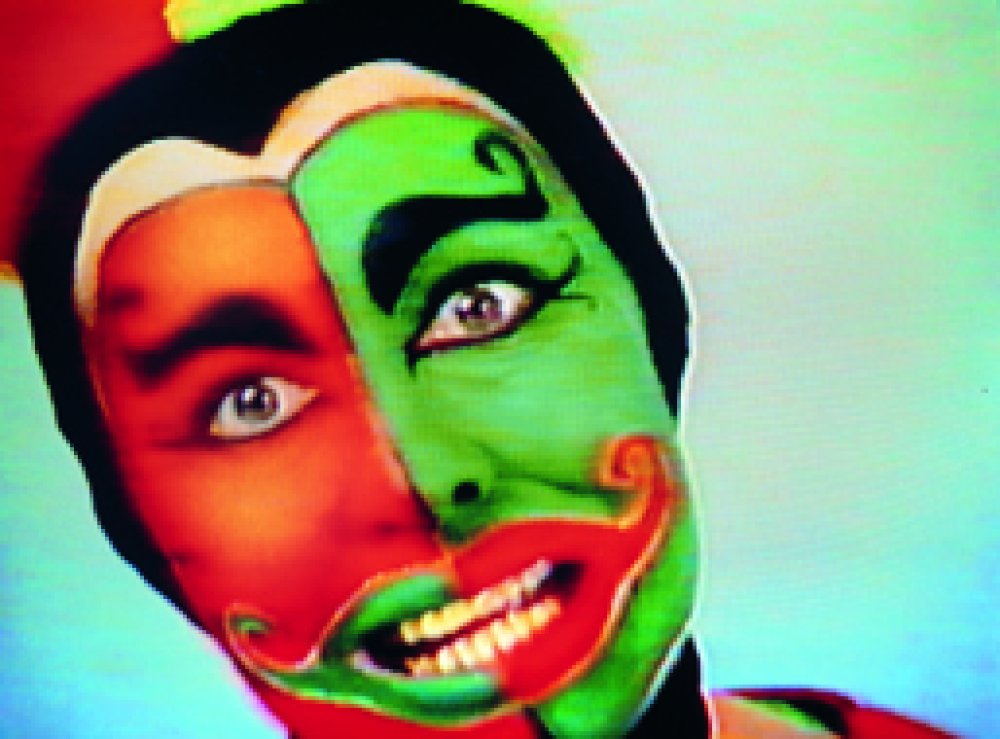Violins + Silence = Violence
Pencil, charcoal and pastel on paper
134 × 154,3 cm (52.7 x 60.7 in.)
142 x 162 x 4 cm (55.9 x 63.8 x 1.6 in.) framed
Pinault Collection
When language begins to break down a little bit, it becomes exciting and communicates in nearly the simplest way that it can function: you are forced to be aware of the sounds and the poetic parts of words. If you deal only with what is known, you’ll have redun-dancy; on the other hand, if you deal only with the unknown, you cannot communicate at all. There is always some combination of the two, and it is how they touch each other that makes communication interesting.”
This is the drawing associated to the neon sculpture Violins, Silence, Violence conceived in 1981–1982. Following his characteristic penchant for working through all the possibilities of the materials and subjects that are important to him, Nauman produced two versions of this neon: an indoor one in the form of a triangle, and a rectilinear outdoor one that is installed as a frieze in the new wing of the Baltimore Museum of Art. In the outdoor version each word appears the right way up with another, upside - down word superimposed over it. On one side of the museum façade, the word “Violins” appears over “Silence” and “Violence” over “Violence”, while on the adjacent wall, “Silence” is placed over “Violins”.
In the drawing shown here, the three words form a triangle in which some words are superimposed and others face each other. The word “violence” contains the first four letters of “violins” and the last five of “silence.” The word play and aural overlapping of these terms, coupled with their positioning, forms a visual poem that describes the paradoxical connections between music and silence, creativity and violence. The repetition and superposition of words disorients visitors and prompts them to think twice about their meaning and associations. The double occurrence of the word “silence”, while paradoxically making it almost illegible, corroborates and gives concrete form to its meaning: by the visual disappearance of the word, silence silences itself.
This work exemplifies Nauman’s relation to language: playing with words in order to underscore certain meanings, to bring out hidden significance or simply to render them incomprehensible.









